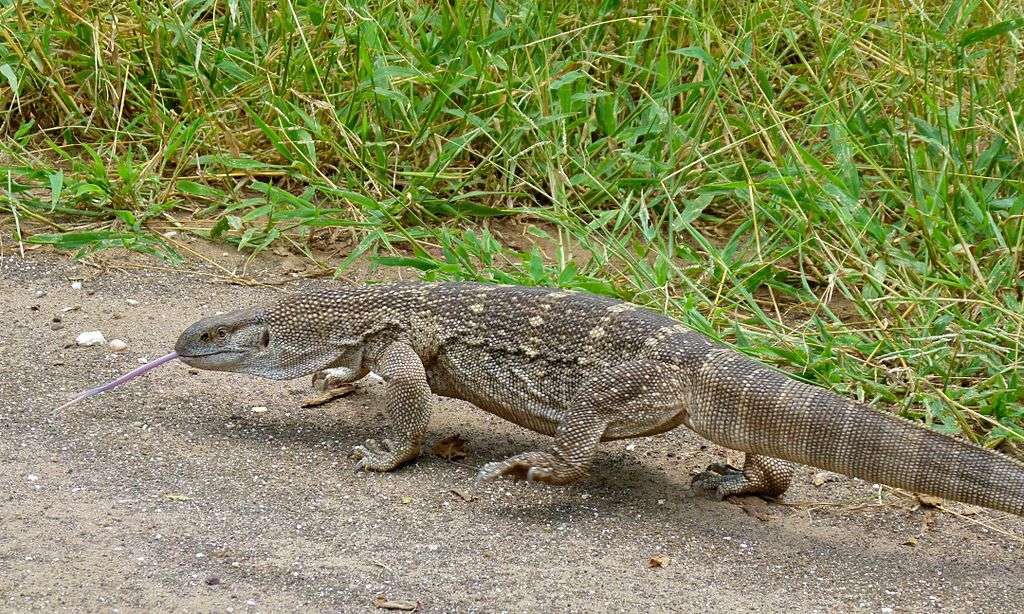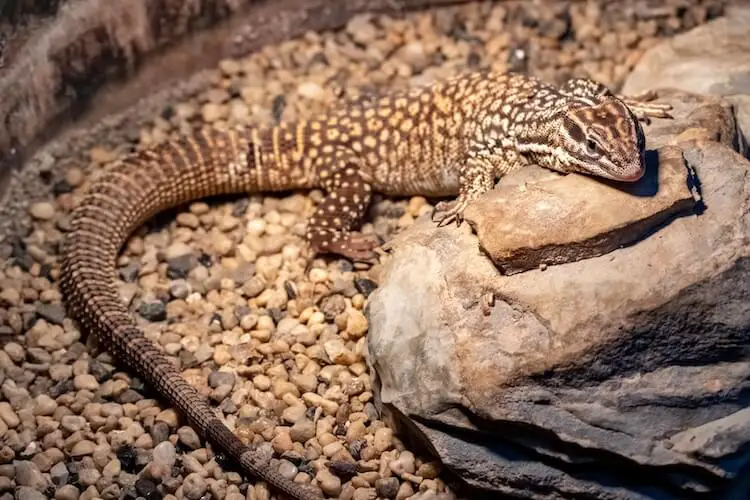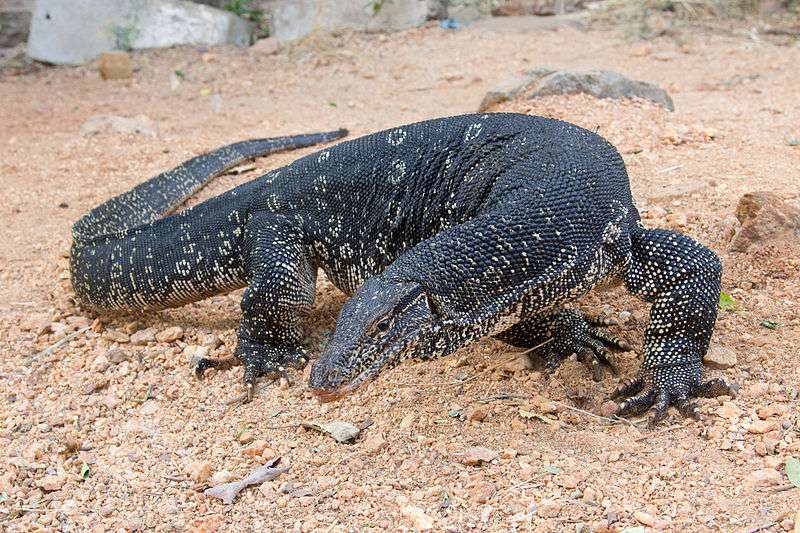
Description:
Scientific name:Varanus albigularis
Life span: Up to 10- 20 years
Rock monitor is Africa’s heaviest lizard, with mature males weighing 6 – 8 kg and females from 3.2 – 5 kg. A large adult male can reach between 15 and 17 kg. Rock monitor has a tail and body that are both the same size and may grow to a total length of 2 meters. The Head and neck are distinct from each other. The snout, which is bulbous and convex, has an angular, box-like look. The body scales are often a speckled gray-brown with yellow or white patterns, while the forked tongue is pinkish or bluish.
Native Region/Habitat
Rock monitor is native to Botswana, Zimbabwe, Zambia, the Republic of South Africa, Namibia, Central Africa, Angola, the Horn of Africa, and the African Great Lakes. They can inhabit prairies, dry habitats, savannahs, and steppes.

Behavior:
In the wild, rock monitors are generalists who opportunistically eat a variety of foods. They eat a lot of tortoises, which are eaten whole because of their hard shell. Otherwise, this species eats mostly invertebrates, notably millipedes, beetles, mollusks, and very little vertebrate food. They don’t mind periodically scavenging the carcasses of vertebrate prey, even if they are as big as vervet monkeys. When in danger, a rock monitor will climb a tree using its strong, sharp claws. When it senses that it is being pursued, it will leap from the tree to the ground, where it will stand up and flee for safety.
Care As a pet/In captivity:
As a precaution against being scratched, leather gloves must be used when handling Rock Monitors because of their pointed claws. When threatened, Rock Monitors whip their long tails to defend themselves. For rock monitors, big cages are needed. When young, pinkie mice and big insects can be given to rock monitors. Rats and mice are consumed by adult rock monitors. Rock Monitors may be trained to eat canned dog food and mince. Rock Monitors will also consume eggs. Use an infrared basking lamp at night and a daylight basking lamp during the day to create a basking area. Rock monitor is not a beginner’s pet species and should only be kept by an experienced reptile keeper.
Table





